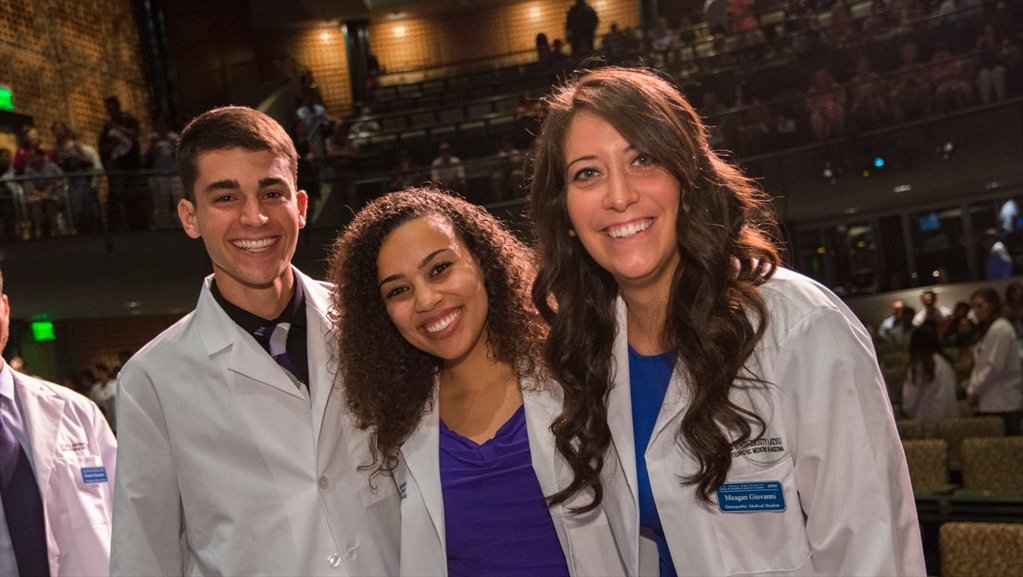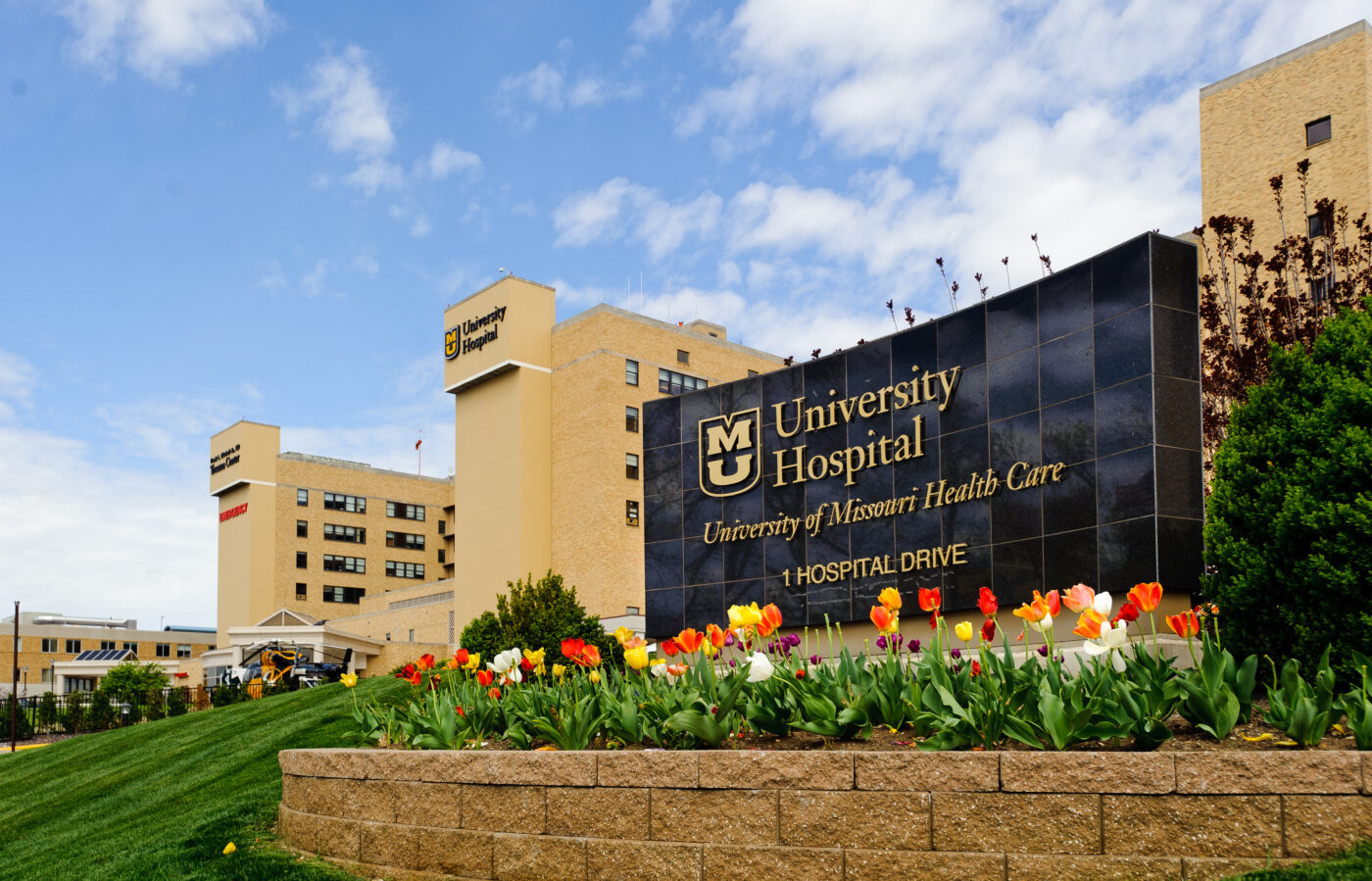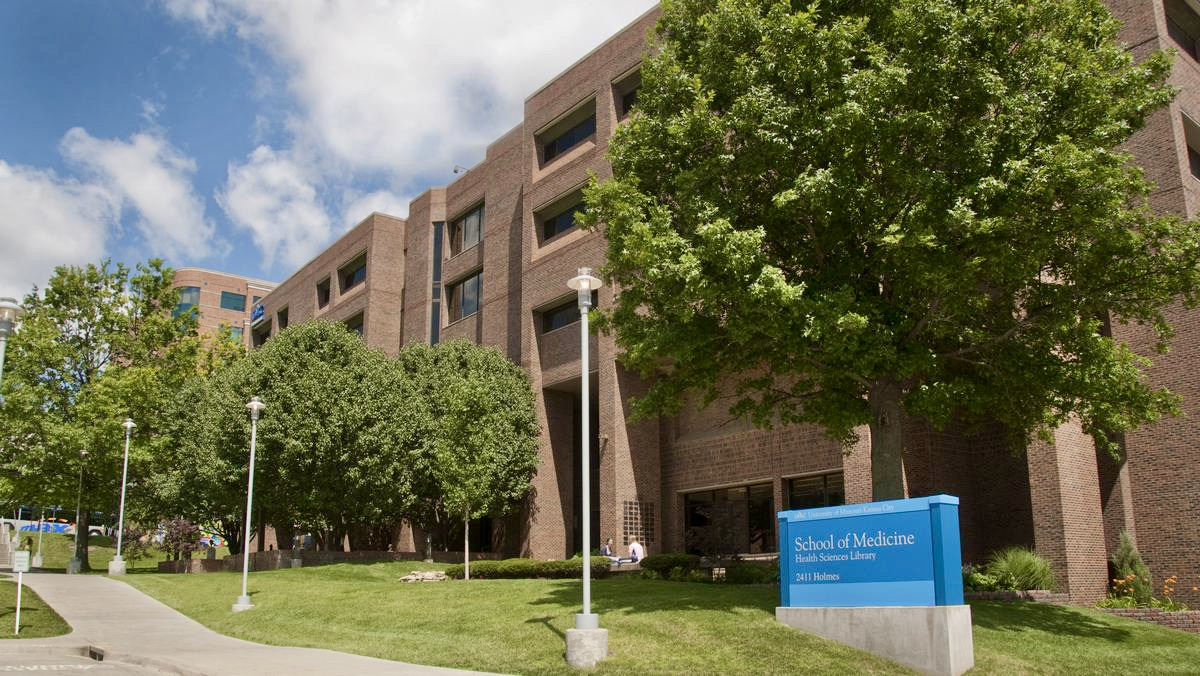The founder of osteopathic medicine, Andrew Taylor Still, established the Kirksville College of Osteopathic Medicine in 1892. Since then, KCOM” has been educating and preparing students to become compassionate and effective osteopathic physicians.
If you’re interested in attending ATSU KCOM, this guide will teach you everything you need to know about how to get in. We cover the school’s admissions requirements, the application timeline, what the school looks for in an applicant, and much more. Consider bookmarking this guide for easy access later on.
Be an Informed Applicant
Every medical school is distinct, and every admissions committee has different priorities. As you go through the application process, you should remember that each school is trying to find students who will thrive in their unique environment and contribute to their institution’s mission.
This guide organizes the key information you need to help focus your application to ATSU. But, as thousands of medical students can attest, nothing beats IMA’s one-on-one medical school admissions consulting. We recognize that every student is unique, and we’ll work with you to develop a personalized strategy for your application. We help with every aspect of the application process, so explore our services and reach out to us, whether you need help with the details or the big picture.
This article contains:
- Why ATSU College of Osteopathic Medicine?
- A.T. Still Kirksville College of Osteopathic Medicine School Ranking
- When to Apply
- DO Degree and Other Medical Programs at A.T. Still University
- Selection Factors: What ATSU KCOM Looks for in a Candidate
- Key Components of a Competitive Application to ATSU KCOM
- Application Tips from ATSU KCOM Admissions
- Admissions Requirements
- Class Profile, Admissions Statistics, and Acceptance Rate
- Kirksville College of Osteopathic Medicine Secondary Application: Essay Prompts, Sample Answers, and Advice
Why ATSU College of Osteopathic Medicine?
The A.T. Still University Kirksville College of Medicine has practiced osteopathic medical education for over 120 years and has contributed greatly to the region’s physician population in underserved and rural areas. With its focus on holistic and preventative healthcare practices and its commitment to public service, Kirksville attracts students with a drive to learn compassionate and impactful medicine.
The 150-acre campus is located in the town of Kirksville, which has a population of just over 17,000. ATSU KCOM houses the A.T. Still Research Institute, the Northeast Missouri Area Health Education Center, the A.T. Still Memorial Library, the Museum of Osteopathic Medicine, the Gutensohn Clinic, rooms for standardized patient encounters, and human patient simulation labs.
The Founding School of Osteopathic Medicine
The A.T. Still University Kirksville College of Osteopathic Medicine was founded as the American School of Osteopathy in 1892. It was the first school of osteopathic medicine and was established by the founder of osteopathic medicine, Andrew Taylor Still.
The legacy of A.T. Still University is one of innovation and a commitment to whole-person healthcare. Andrew Taylor Still founded the osteopathic tradition in the 19th century in response to ineffective and often harmful medical practices at the time. One of his driving ambitions was to create a method of care that avoided harm and unnecessary risks to patient health. Still’s original osteopathic approach aimed to establish disorders in the musculoskeletal system as the fundamental cause of physiological disorders and disease. While some osteopathic theories and practices have evolved in response to modern scientific studies, osteopathic medicine continues to emphasize preventative and holistic medicine as well as the importance of the musculoskeletal system in overall health.
The Kirksville campus hosts the Museum of Osteopathy, which contains over 80,000 artifacts. Books, tools, documents, and photographs from as far back as 1800 are used to tell the story of osteopathic medicine.
Serving the Underserved and Whole-Person Care
The rich history of A.T. Still University and the osteopathic tradition make it an attractive choice for medical students who are looking for a school with a profound legacy of medical education. But there’s more to ATSU than its contribution to the history of medicine.
The Kirksville College of Osteopathic Medicine has a tradition of producing osteopathic physicians committed to serving rural and underserved communities. The school is ranked in the top 10 medical schools nationally for most graduates practicing in primary care fields and rural areas. It’s also in the top 25 schools with the most graduates practicing in medically underserved areas.
The leadership at ATSU approaches the delivery of medical care from the recognition that the greatest challenges in healthcare come from issues of access. The school is dedicated to teaching its student how to make a difference in underserved communities by focusing on addressing barriers to access. Some communities ATSU focuses on include patients turned away by providers due to disabilities such as autism spectrum disorder, heart patients that cannot receive care to due liabilities, seniors with cognitive and/or mobility challenges, patients with little to no medical insurance, and anyone who is limited by geographical, cultural, economic, social, or linguistic barriers.
A.T. Still University is also dedicated to a whole-person care approach in its osteopathic medical program. This means that students are not only trained to use cutting-edge medical technology and procedures, but they’re also taught how to integrate osteopathic principles into their patient care. This includes treating “body, mind, and spirit” and taking into account the social determinants of health that can impact a patient’s health and wellbeing. The school teaches osteopathic techniques such as high velocity, low amplitude (thrust), muscle energy, counter-strain, myofascial release, and cranial osteopathy.
Facts and Figures
Graduates of the ATSU Kirksville College of Osteopathic medicine go on to complete residencies at John Hopkins University, Yale, the Mayo Clinic, and other prestigious medical institutions. Here are some statistics about the school:
- 92% COMLEX pass rate Level 1
- 99% COMLEX pass rate Level 2CE
- 94% COMLEX pass rate Level 2PE
- 95% of residency directors would accept ATSU KCOM graduates again
- 98% residency match rate
- 56% of graduates enter family medicine, internal medicine, or pediatrics
- ATSU KCOM has graduated over 23,000 osteopathic doctors
Kirksville College of Osteopathic Medicine School Ranking
A.T. Still University ranks top ten in two important categories. Here are the 2023 medical school rankings given to ATSU by U.S. News and World Report.
- #5 in Most Graduates Practicing in Primary Care Fields
- #6 in Most Graduates Practicing in Rural Areas
- #24 in Most Graduates Practicing in Medically Underserved Areas
Med-Colleges.com gives A.T. Still University (Kirksville) the following ratings:
- Overall: 4.5/5
- Curriculum: 4.5/5
- Teaching: 4.5/5
- Safety: 3/5
Here’s how Med-Colleges.com ranked ATSU KCOM in 2022.
National Ranking:
- #41 Alternative Medicine
Regional Ranking (Midwest):
- #84 Public Health
- #81 Health Care Administration
- #77 Biomedical Sciences
- #69 Physical Therapy
- #62 Health Services
- #61 Communication Disorders
- #12 Alternative Medicine
State Ranking (Missouri):
- The Second Best Alternative Medicine
- #10 Health Care Administration
- #9 Health Services
- #9 Communication Disorders
- #8 Public Health
- #8 Physical Therapy
- #7 Biomedical Sciences
When to Apply to A.T. Still Kirksville College of Medicine
The admissions committee at A.T. Still University encourages candidates to submit the primary AACOMAS application as early as they can. AACOMAS applications can be filed as early as June 1st. The deadline to apply is February 1st.
After receiving your AACOMAS application and confirming you meet the admissions criteria, admissions will invite you to complete the secondary application. Secondary applications are due by March 1st.
Applicants with a GPA of 3.5 or higher and an MCAT score of at least 504 may apply for an early decision. To be eligible, you must submit your AACOMAS application by August 1st and your secondary application (and supporting materials) by September 15th.
Interviews begin in October. Candidates are notified of admissions decisions within two weeks of interviewing.
Four-year DO Program at A.T. Still University Kirksville Medical School
The curriculum at Kirksville College of Osteopathic Medicine emphasizes the osteopathic principles of holistic and preventative medicine throughout the four years of the DO program. Through the use of medical education technology such as simulated patient encounters and human patient simulators, students begin patient-based clinical training early on. After two years of basic and clinical sciences, students move on to clinical rotations at ATSU sites across the country.
Here’s a more detailed picture of what medical education at ATSU KCOM looks like.
Years One and Two
In the first semester, students are introduced to the foundations of osteopathic medicine, orienting them to the clinical sciences. After this initial academic orientation to medicine, the curriculum changes to patient-centered learning experiences. Patient-centered learning contextualizes medical sciences within real-world scenarios and clinical environments.
These first two years are designed to prepare students for clinical rotations in the third and fourth years of the DO program. Students take coursework in medical science subjects such as anatomy, biochemistry, physiology, and pharmacology. Students also complete osteopathic manipulative medicine (OMM) training and participate in clinical skills labs.
Here’s a sample courseload for years one and two of the DO program at Kirksville College of Osteopathic Medicine.
Year one – Pediatrics I, Performance Assessment I, Clinical Experiences (2-week off-campus rotation), Essentials of Surgery I, Internal Medicine I, Infectious Diseases I, Medical Physiology I and II, Medical Pharmacology I and II, Pathology I, Osteopathic Theory and Methods I and II, Medical Genetics and Embryology, Medical Microbiology, Immunology I, Histology I and II, The Complete Doctor I and II, Human Biochemistry I and II, Human Developmental & Gross Anatomy/Radiology I and II, and Clinical Ultrasound I and II.
Year two – Performance Assessment II, Pediatrics II and III, Advanced Cardiac Life Support, Neuroscience, Dermatology, Women’s Health, Essentials of Surgery II and III, Medical Physiology III, Medical Pharmacology III, Pathology II, Osteopathic Theory and Methods III and IV, Internal Medicine II, Immunology II, Infectious Diseases II and III, Histology III, The Complete Doctor III and IV, Human Biochemistry III, and Clinical Ultrasound III and IV.
Years Three and Four
In the third and fourth years, students are educated through clinical rotations at ATSU sites across the country. Regional clinical sites are located in Arizona, Illinois, Indiana, Kansas, Michigan, Missouri, New Jersey, Ohio, Pennsylvania, Texas, and Utah. Clinical coursework is completed online during the 88 weeks of rotations.
Here are the required rotations.
Foundations 1 (32 weeks):
- Psychiatry
- OB/GYN
- Surgery
- Internal Medicine
- Pediatrics
- Rural or Underserved Family Medicine
- Family Medicine
Foundations 2 (12 weeks):
- Emergency Medicine
- Critical Care/ICU
- Family Medicine
Students also take 44 weeks of elective rotations.
Other Medical Programs at A.T. Still University
The Kirksville College of Osteopathic Medicine also offers a Master of Biomedical Sciences program. This program is designed for students pursuing careers and/or future education in primary care and/or medical research. Graduates conduct research projects in physiology, pharmacology, microbiology, immunology, biochemistry, or anatomy.
In addition to the DO and MA programs offered at the Kirksville campus, A.T. Still University provides many other medical education programs across the country and online.
Doctoral programs at A.T. Still University include:
- Audiology (Mesa, AZ)
- Dental Medicine (Mesa, AZ and Kirksville, MO)
- Occupational Therapy (Mesa, AZ)
- Physical Therapy (Mesa, AZ)
- Osteopathic Medicine (Mesa, AZ and Kirksville, MO)
- Athletic Training (online)
- Education in Health Professions (online)
- Health Administration (online)
- Health Sciences (online)
- Medical Sciences (online)
- Nursing Practice (online)
Master of Science programs at A.T. Still University include:
- Biomedical Sciences (Kirksville, MO)
- Science in Orthodontics (Mesa, AZ)
- Science in Occupational Therapy (Mesa, AZ)
- Physician Assistant Studies (Mesa, AZ and Santa Maria, CA)
- Speech-Language Pathology (Mesa, AZ)
- Education in Health Professions (online)
- Health Administration (online)
- Health Sciences (online)
- Public Health (online)
- Public Health – Dental Emphasis (online)
- Public Health – Dental Emphasis with a Dental Public Health Residency Certificate (online)
- Athletic Training (online)
- Kinesiology (online)
Selection Factors: What ATSU KCOM Looks for in a Candidate
Medical schools across the country are dedicated to providing quality medical care to the public. To do this, they seek out well-rounded, caring individuals who have a solid foundation in the sciences and who display qualities that indicate they will be successful in the field of medicine.
Many schools share visions of what makes an ideal candidate. Applicants should study the AAMC Core Competencies for Entering Medical Students when applying to allopathic schools, and familiarize themselves with the target AACOM Core Competencies when applying to osteopathic schools.
Despite the similarities, each medical school has distinct characteristics that set it apart from the rest — which means there are different indicators of success. Medical schools develop a set of selection factors based on their curriculum, values, and the type of physicians they hope to produce. Researching these selection factors is a key component of the application process.
In this section, we look into what ATSU KCOM is looking for in an applicant and cover specific tips provided by the ATSU KCOM Office of Admissions.
Key Components of a Competitive Application to ATSU KCOM
An ideal applicant to ATSU KCOM does more than demonstrate an understanding of the institution’s core osteopathic values. Competitive candidates identify with the school’s mission to serve underserved communities and can demonstrate this through a history of volunteering and healthcare-related work.
The Office of Admissions evaluates candidates in three areas:
- academic accomplishment
- personal characteristics of a healer
- propensity to serve the underserved
Here are some of the ways the Office of Admissions at ATSU KCOM sees successful applicants demonstrate the school’s core values:
- Impactful clinical exposure – Applicants should have a significant amount of varied clinical exposure to demonstrate an understanding of the realities of patient care and the physician’s role. Ideally, your clinical experiences align with the school’s mission to serve.
- Acquire a letter of support from an osteopathic physician – A letter of support from an osteopathic physician is not required but will be given special attention by the admissions committee. You are encouraged to shadow an osteopathic physician, and a letter of support demonstrates your dedication to the osteopathic profession.
- Obtain a letter of support from the leadership of medical outreach activities – Whether it’s your mentor at International Medical Aid, the director of your local free clinic, or the administrator of a medical mission trip, having a letter that attests to your activities in medical outreach is another way to demonstrate your dedication to serving underserved communities.
- Demonstrate academic and time-management skills – ATSU KCOM sees a successful applicant as one who has overcome adversity, managed their time well, and achieved academic success. Whether it was working and going to school at the same time, taking care of a family member, or pushing yourself to take challenging coursework, the admissions committee wants to see that you have what it takes to succeed in medical school.
If you’re looking for how to best meet the Office of Admissions’ criteria, consider IMA’s pre-med internships abroad. Our programs combine service-learning, physician shadowing, specialty didactic sessions, admissions consulting, and more. These not-for-profit global initiatives give pre-med students unforgettable experiences and important insights into what it takes to make a difference in medically underserved communities.
Application Tips from ATSU KCOM Admissions
In this section, we’ll go over the important application tips given by ATSU KCOM admissions.
These tips come directly from faculty at A.T. Still University Kirksville College of Osteopathic Medicine. By combining this information with the rest of the advice in this application guide, you’ll be on the right path to crafting a competitive medical school application.
First, let’s look at some of the key pieces of advice for when you are writing your personal statement and essay responses.
- Proofread! – Your personal statement and essay responses are crucial parts of your application. Be sure to proofread them for grammar, spelling, and punctuation errors. Double-check your work for flow and impact too.
- Consider your tone – The admissions committee wants to get to know you as a person. Write in a way that is genuine and interesting. Admissions advises applicants to focus on their positive attributes rather than trying to sound humble or over-emphasizing challenges.
- Directly tie your clinical experience and personal history to why you want to be a physician – Take advantage of the freedom to write about your experiences in a personal way. The admissions committee advises you to talk about pre-med clinical exposure and personal experiences in a way that only you can — how did these things move you to pursue medicine? With this, ATSU KCOM says, “most importantly, share your feelings.”
- Use appropriate writing techniques to showcase your writing skills and communicate effectively – Use the “active voice” and a mixture of simple and complex sentences. Employ medical and educational terminology correctly. Introductions and conclusions are important for establishing a context and framing your thoughts.
- Be proud of your accomplishments and contextualize them – Your activities, awards, and leadership roles are all part of who you are. Talk about how these accomplishments have helped you grow as a person, how they relate to your journey in medicine, and what it took to achieve excellence.
- Brainstorm – The admissions committee advises you to think about your experiences, motivations, and qualities that you want to highlight ahead of time. What are some specific examples that can be used to demonstrate these things? Spend some time experimenting with different ways to tell your story before you start writing.
- Be specific and concise – “Don’t ramble.” Be sure to focus on a few key points and develop them in-depth. Use evidence to support your statements and make sure each sentence is relevant to your overall message.
- Balance actions and feelings – Share your emotions without being too general and describe your accomplishments without being too robotic. Again, be specific about your actions and emotions, be they past, present, or future-oriented.
- Don’t reuse writing from the primary application – Revisiting information is different than simply repeating it. Reusing sentences wastes the time of those reviewing your application and keeps you from taking advantage of the opportunity to show more of who you are. Be sure your responses are fresh and tailored to the questions being asked.
- Be yourself — no gimmicks – There’s no need to be ostentatious or flamboyant in your application materials. Just be yourself, tell your story, and let the admissions committee get to know you as a person.
Next, let’s go over the top 10 application mistakes, according to the ATSU KCOM admissions faculty.
- Not verifying that your application materials have been received. Applicants should contact AACOMAS and the ATSU KCOM Office of Admissions to confirm that all of your documents have been received.
- Not spending enough time on the AACOMAS personal statement and not soliciting feedback. You take plenty of time to write and revise your personal statement. Ask friends, family, mentors, and admissions experts for their feedback on your essay.
- Not sufficiently explaining discrepancies in the application (or over-explaining instead!). Make sure to give a clear account of any academic lapses, poor grades, or anything else that negatively affects your application. But don’t over-explain or try to rack up excuses. Be forthcoming and concise.
- Starting too late. Everything from acquiring clinical experience to working on your applications should be done within an appropriate timeline.
- Not being personal enough. KCOM admissions states, “We see many personal statements that reflect what students consider to be “ideal” steps in the application process (clinical experience, work history details, and so on). We would like to hear more about the specific examples that accompany such experiences.”
- Handwriting applications. Applications should be typed, when possible.
- Submitting letters of recommendation written by people who haven’t known the applicant for very long. Ideal letters of recommendation/evaluation come from people who know you well and have spent time observing your academic, professional, and/or personal strengths.
- Inappropriate behavior when interviewing or contacting the Office of Admissions. Be respectful, courteous, and patient every step of the way.
- Failing to practice interview skills. Interviews are a critical part of the admissions process and it’s important to be prepared. (Did you know: IMA’s admissions experts conduct mock interviews with you to help you prepare for the real thing?)
- Not having an understanding of what osteopathic medicine is. The KCOM Office of Admissions says that this is most obvious in passages that “repeat our brochures to us.” Study the history and principles of osteopathic medicine and reflect on what the field means to you.
Admissions Requirements
Applicants must be citizens or permanent residents of the U.S. and meet the following requirements.
Minimum GPA and MCAT Requirements
The minimum GPA required to apply to the Kirksville College of Osteopathic Medicine is 2.8 cumulative and 2.8 in the sciences. All grades are used when calculating GPA and all grades for classes taken more than once are included, not replaced.
There is no minimum MCAT score for most applicants. MCAT scores must be no more than three years old.
Applicants who will not have completed a bachelor’s degree at the time they expect to matriculate must have a cumulative 3.5 GPA and 3.5 science GPA and an MCAT score of 504 or higher.
Required Coursework
Candidates must have completed 90 semester hours at an accredited college or university. At least 30 hours must be completed at a four-year degree-granting institution. You are also required to complete the prerequisite coursework with a grade of C or higher.
- Organic Chemistry – One year with lab
- General or Inorganic Chemistry – One year with lab
- Physics – One year with lab
- General Biology – One year with lab
- English – Six semester hours
Letters of Recommendation
ATSU KCOM requires two letters of recommendation.
- One letter from your school’s pre-med committee or a science faculty member
- One letter from a physician
Letters may not be from relatives. A good letter of recommendation evaluates your academic/professional ability and potential, addresses your personal character, and explains how well the writer knows you.
Class Profile and Admissions Statistics
Here are some admissions statistics for the 2021-2022 entering class to help give you an idea of how competitive the applicant pool is.
- Applications recieved: 5,300+
- Class size: 172
- Average cumulative GPA: 3.69
- Average science GPA: 3.64
- Average MCAT score: 504
- Average age: 24
A.T. Still Osteopathic Medical School Acceptance Rate
The acceptance rate at A.T. Still University Kirksville College of Osteopathic Medicine ranges from 3% to 9%. The average acceptance rate for all medical schools is 5.5%.

Kirksville College of Osteopathic Medicine Secondary Application: Essay Prompts, Sample Answers, and Advice
In the “Selection Factors” section above, we covered advice given by the ATSU KCOM Office of Admissions on how best to write personal and secondary essays.
Now, let’s take a look at specific prompts and how to approach answering them.
The following essay prompts are from ATSU KCOM’s 2021-2022 application cycle.
Essay #1
What particular qualities do you feel you can bring to KCOM? (500 words)
With this question, focus on how your attendance will benefit the community at KCOM. What is unique about you, your personal history, your clinical experiences, your academic focus, your character, etc.? And how will these things contribute to KCOM’s mission?
This question is about your qualities, but it’s also about how those qualities can help others. What will you add to the diversity of perspectives at KCOM? How will you make a difference in the lives of your classmates and patients?
Be honest, be reflective, and be specific.
Here are some examples of how to approach this prompt:
- If you’re coming from a non-traditional background, talk about how your unique experiences will contribute to the KCOM community. How have your life experiences shaped your perspective on medicine?
- If you’re passionate about a particular area of medicine (e.g., rural health, global health, etc.), talk about how your interests will contribute to KCOM’s mission. What experiences have you had in this area? What do you hope to do with your career?
- If you have a strong interest in research, talk about how your research experience will benefit the KCOM community. What projects have you worked on? What are you hoping to accomplish with your research?
- If you have a strong interest in teaching, talk about how your experience will benefit the KCOM community. What experiences do you have in teaching? What makes you a good teacher?
Keep in mind everything we’ve covered so far in this guide. ATSU KCOM is a medical school with a deep commitment to delivering care to the underserved and practice whole-person, preventative medicine. Consider qualities that align with these values.
Here’s a sample answer:
I’m a first-generation college student and the first in my family to pursue a career in medicine. I understand firsthand the challenges that come with navigating the healthcare system, and I hope to use my experiences to help others. I’m also passionate about working with underserved populations, and I have personally witnessed what it takes to deliver effective and compassionate care in challenging circumstances.
When I began my pre-med track, I felt out of place among my peers. My parents and grandparents helped me attend Washington University in St. Louis, which I am immensely thankful for. But I didn’t have the same economic or social background as my fellow pre-med students, and I often felt like the only one focused on primary care and accessibility.
I sought out clinical experiences that would expose me to a variety of patients and medical settings to help me remain in touch with my goals. I volunteered at a free clinic, worked as an EMT, and enrolled in a pre-med internship abroad with International Medical Aid. These experiences not only solidified my commitment to primary care, but also showed me how much there is to learn about people and medicine.
With each of these experiences, I learned to verbalize my interests, values, and experiences more. Eventually, I grew very close to my peers at Washington University. Some classmates and I started an afterschool meet-up for pre-med students to discuss medicine outside of our academic and professional routines. We talked about philosophies of care and systemic barriers to medicine. It was at these meet-ups that I first learned about osteopathic medicine.
The experiences I had with International Medical Aid — shadowing resourceful, compassionate physicians in East Africa, learning about regional medicine, and teaching children important medical concepts — inspired me to build a community of caring, thoughtful medical students at Washington University. And this community inspired me to pursue osteopathic medicine. What will I bring to ATSU KCOM? I know from experience that bringing people together and sharing ideas can spur action and help people make life-changing decisions about the future of medicine, what it means to be altruistic, and how to make a real difference in the world. At KCOM, I hope to continue building community and developing new ways of approaching medicine.
This is just one example, and you should write about whatever experiences and qualities you think will make you a good fit for KCOM. Be honest, be vulnerable, and be yourself. Remember that the admissions committee is reading your application to get to know you as a person, so don’t be afraid to let your personality shine through. You don’t need to oversell yourself or come up with unique or unusual experiences; just be genuine. As the ATSU KCOM Office of Admissions advises, “no gimmicks.”
Essay #2
What specific experience/exposure have you had with osteopathic medicine? How has this influenced your decision to become an osteopathic physician? (500 words)
This is your chance to talk about your experiences with osteopathic medicine and how they’ve influenced your decision to become an osteopathic physician. You might discuss your interactions with osteopathic physicians, your exposure to osteopathic medical philosophy and principles, or your clinical experiences in osteopathic medical settings.
In the “Selection Factors” section above, we noted the many DOs and DON’Ts provided by the Office of Admissions at ATSU KCOM. One of the top mistakes made by applicants to A.T. Still University is not demonstrating a genuine understanding or interest in osteopathic medicine.
So, when describing your clinical exposure to osteopathic medicine, be sure to communicate what you observed and how it made an impression on you. For example, if you worked with an osteopathic physician who took a lot of time to get to know her patients, you might discuss how this influenced your understanding of the doctor-patient relationship. Did the DO physicians use any osteopathic manipulative treatments (OMTs)? If so, how did they explain these treatments to patients and what did you think of them?
Additionally, you can incorporate literature from academic sources, such as the Journal of Osteopathic Medicine into your essay. This will show that you’re keeping up with the latest developments in osteopathic medicine and that you understand the underpinnings of this branch of medicine.
Essay #3
Please list any changes or updates to your AACOMAS application. This section may be left blank if your AACOMAS application is complete and accurate. (500 words)
For this question, simply list any changes or updates to your AACOMAS application. There’s no need to over-explain these changes, but do give a brief description of why you’re making them.
Good Luck to You!
We hope that this article has given you the information and guidance you need to put together a strong application for ATSU KCOM. If you need help with anything throughout your application journey — from personalized medical school admissions consulting to finding powerful pre-med internships abroad — we’re here to assist every step of the way. Please reach out to us to learn more about our services and how we can help you achieve your goals.
Don’t forget to explore our growing catalog of definitive medical school guides:
- Saint Louis University School of Medicine
- University of Missouri Medical School
- Kansas City University (KCU)
- UMKC School of Medicine
- New York Medical College
- University of Pittsburgh School of Medicine
- University of Wisconsin Medical School
- VCU School of Medicine
- University of Maryland School of Medicine
- Case Western Medical School
- University of North Carolina Medical School
- University of Florida Medical School
- Emory University School of Medicine
- Boston University College of Medicine
- California University of Science and Medicine
- UC San Diego Medical School
- California Northstate University College of Medicine
- Touro University of California
- CHSU College of Osteopathic Medicine
- UC Davis School of Medicine
- Harvard Medical School
- UC Riverside School of Medicine
- USC Keck School of Medicine
- UT Southwestern Medical School
- Long School of Medicine at UT Health San Antonio
- University of the Incarnate Word School of Osteopathic Medicine
- UT Austin’s Dell Medical School
- UTMB School of Medicine
- McGovern Medical School at UT Health
- Johns Hopkins School of Medicine
- McGovern Medical School at UT Health
- The University of Texas Rio Grande Valley School of Medicine
- UNT Texas College of Osteopathic Medicine
- University of Houston College of Medicine
- Texas A&M College of Medicine
- Johns Hopkins Medical School
- Baylor College of Medicine
- George Washington University School of Medicine
- Vanderbilt University School of Medicine
- St. George’s University School of Medicine
- Lake Erie College of Osteopathic Medicine (in Pennsylvania)
- Sidney Kimmel Medical College at Thomas Jefferson University
- Wake Forest University School of Medicine
- Western University of Health Sciences (in California)
- Drexel University College of Medicine
- Stritch School of Medicine at Loyola University Chicago
- Georgetown University School of Medicine
- Yale School of Medicine
- Perelman School of Medicine
- UCLA Medical School
- NYU Medical School
- Washington University School of Medicine
- Brown Medical School
We wish you the best of luck in your journey to becoming an osteopathic doctor!






